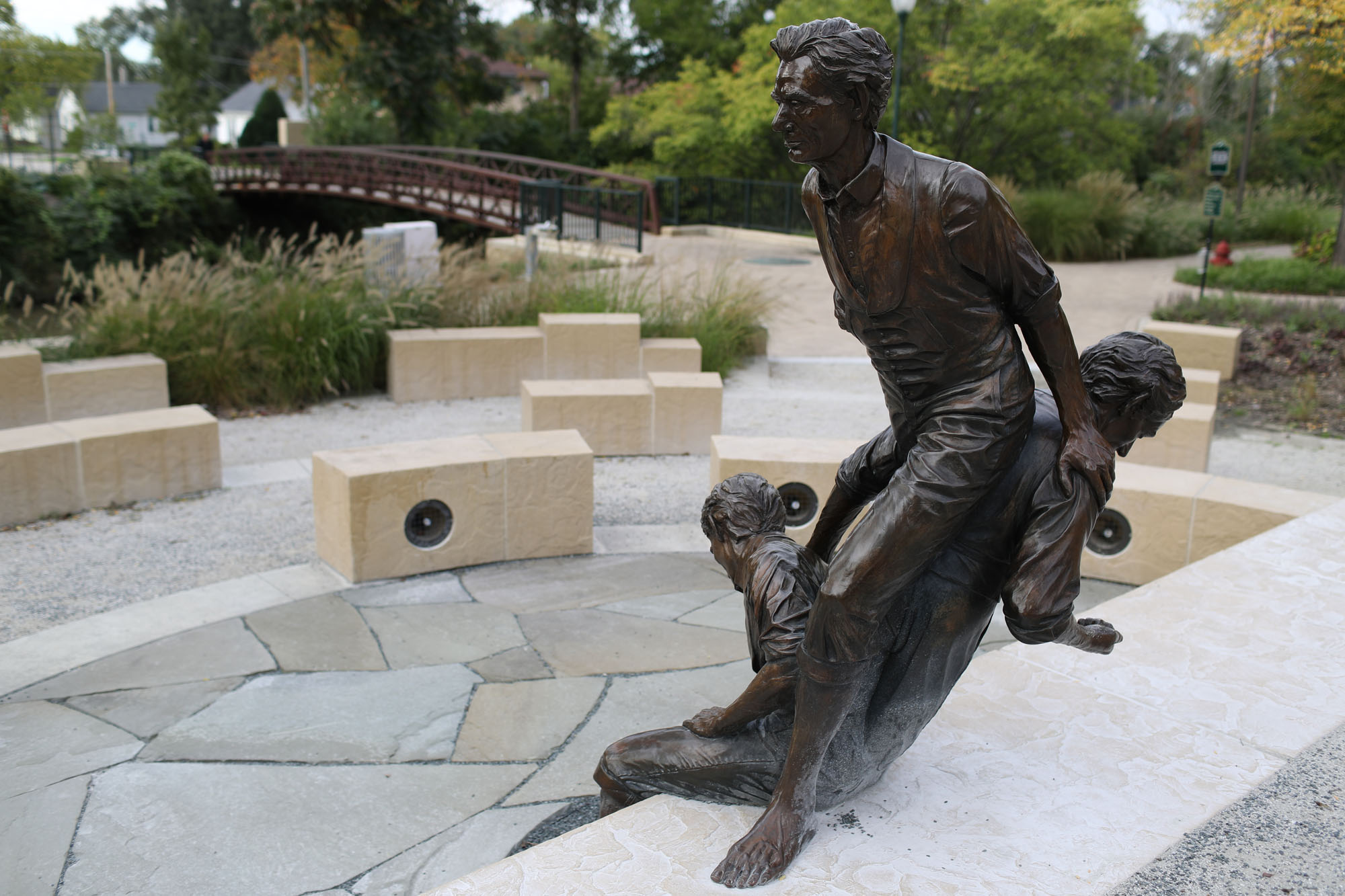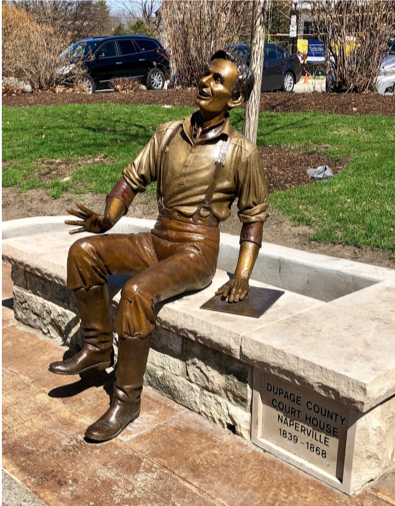When thinking of Abraham Lincoln, what is the image that comes to mind? You are probably imagining a stoic man with a beard. This makes sense, considering this is the most common representation of Lincoln. One famous example is the Lincoln Memorial in Washington D.C. by Daniel Chester French. French, like many artists, used Lincoln’s likeness during the Civil War as inspiration for his work. From these examples, you would never know that Lincoln had a reputation for his sense of humor. Modern artists are going beyond the age-old image and showing different facets of Lincoln’s personality.

One of these artists is David Ostro, whose statue is the focal point of Lincoln Landing. Ostro’s “Lincoln in Three Poses” depicts a younger Lincoln, without his signature beard and stoic features. Ostro found that most Lincoln source material came from the earliest known photographic process, the Daguerreotype. To take a photograph, the subject had to sit perfectly still for up to 15 minutes, a process Lincoln hated. Beyond that, it almost guaranteed somber looking images. Ostro, like many historians, knew that Lincoln was a man of personality, and he wanted to show that in his work.
 Another local artist’s representation of Lincoln shows the “lighter side” of Lincoln. Artist David Alan Clark’s “Laughing Lincoln” statue was dedicated on December 2nd, 2008. The statue depicts Lincoln as a 30-year old Illinois State legislator laughing or telling a joke. Lincoln served in the legislature with Joseph Naper, the founder of Naperville. In 1839, both Lincoln and Naper voted to move the state capital from Vandalia to Springfield and to separate DuPage County out from Cook County.
Another local artist’s representation of Lincoln shows the “lighter side” of Lincoln. Artist David Alan Clark’s “Laughing Lincoln” statue was dedicated on December 2nd, 2008. The statue depicts Lincoln as a 30-year old Illinois State legislator laughing or telling a joke. Lincoln served in the legislature with Joseph Naper, the founder of Naperville. In 1839, both Lincoln and Naper voted to move the state capital from Vandalia to Springfield and to separate DuPage County out from Cook County.
 Every representation of Lincoln lets us reflect on the ways he shaped our local and national history. They remind us that there is more to a person than the historical narrative that we create for them. We are looking past the mythological image of Lincoln by remembering he was a person, just like any of us.
Every representation of Lincoln lets us reflect on the ways he shaped our local and national history. They remind us that there is more to a person than the historical narrative that we create for them. We are looking past the mythological image of Lincoln by remembering he was a person, just like any of us.